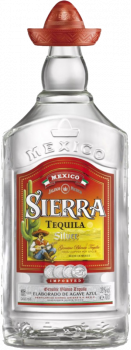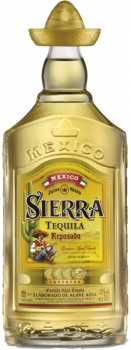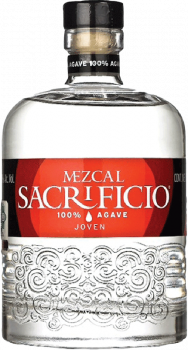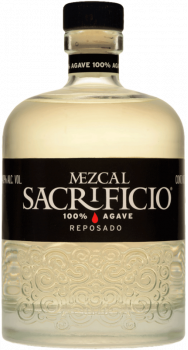Showing 1 to 5 of 5 (1 Pages)
Buy Tequila
Tequila is a variety of mezcal originating in Mexico, which is obtained from the fermentation and distillation of must extracted from a plant known as agave or maguey. Tequila is named after its place of origin, in the region of Tequila, Jalisco. Mezcal, on the other hand, is made mainly in Oaxaca, in the south of Mexico. Here you can find bottles of the best native varieties of tequila and mezcal.
Tequila and Mezcal: Differences between both
Origin and raw material of Tequila and Mezcal
Although tequila is properly a variety of mezcal, one of the main differences between tequila and mezcal is dictated by the place of origin of each drink. Tequila gets its name from its place of origin, the Tequila region in the western Mexican state of Jalisco. Over time, the regions of Guanajuato, Michoacán, Nayarit, and Tamaulipas also received the denomination of origin.
On the other hand, mezcal is produced mainly in Oaxaca, in the south of Mexico, although also in Durango, Guanajuato, Guerrero, Michoacán, San Luis Potosí, Puebla, Tamaulipas and Zacatecas.
On the other hand, although both tequila and mezcal come from the agave, mezcal can come from various species of this plant and tequila can only be made from the blue agave tequilana Weber variety.
Artisanal vs. Industrial
While the mezcal is made in a traditional way, from 100% agave without added chemicals or yeast during fermentation, the tequila is mass produced in an industrial way, from agave and up to 49% of other carbohydrates and chemicals.
In addition, while tequila agave is steamed in industrial ovens before being distilled two or three times in copper pots, mezcal agave is roasted in earthen pits and hot stones, where wood and charcoal are also added, giving it a smoky flavor.
Different types of tequila and mezcal
Tequila is classified according to the amount of time it remains in oak barrels after distillation. Depending on this, we obtain white tequila when it is aged from 0 to 2 months, rested when it has been between 2 and 12 months and aged when it has been more than a year.
On the other hand, mezcal is also classified in three groups by the time it remains in the barrel: young mezcal is aged from 0 to 2 months, rested from 2 to 12 months and añejo remains in barrel for more than a year.
The longer the drink remains in barrels, the more wood dyes it can acquire, so that the longer it is aged, the darker its color will be, going from white to gold. In addition, the time of aging also has an impact on its flavor.
Mezcal, in turn, admits more classifications. The double-distilled mezcal, with a stronger flavor, is called mezcal minero. If a maguey worm is also added to this mezcal, it is called worm mezcal.
- ;
- ;
- ;
Buy Tequila
Tequila is a variety of mezcal originating in Mexico, which is obtained from the fermentation and distillation of must extracted from a plant known as agave or maguey. Tequila is named after its place of origin, in the region of Tequila, Jalisco. Mezcal, on the other hand, is made mainly in Oaxaca, in the south of Mexico. Here you can find bottles of the best native varieties of tequila and mezcal.
Tequila and Mezcal: Differences between both
Origin and raw material of Tequila and Mezcal
Although tequila is properly a variety of mezcal, one of the main differences between tequila and mezcal is dictated by the place of origin of each drink. Tequila gets its name from its place of origin, the Tequila region in the western Mexican state of Jalisco. Over time, the regions of Guanajuato, Michoacán, Nayarit, and Tamaulipas also received the denomination of origin.
On the other hand, mezcal is produced mainly in Oaxaca, in the south of Mexico, although also in Durango, Guanajuato, Guerrero, Michoacán, San Luis Potosí, Puebla, Tamaulipas and Zacatecas.
On the other hand, although both tequila and mezcal come from the agave, mezcal can come from various species of this plant and tequila can only be made from the blue agave tequilana Weber variety.
Artisanal vs. Industrial
While the mezcal is made in a traditional way, from 100% agave without added chemicals or yeast during fermentation, the tequila is mass produced in an industrial way, from agave and up to 49% of other carbohydrates and chemicals.
In addition, while tequila agave is steamed in industrial ovens before being distilled two or three times in copper pots, mezcal agave is roasted in earthen pits and hot stones, where wood and charcoal are also added, giving it a smoky flavor.
Different types of tequila and mezcal
Tequila is classified according to the amount of time it remains in oak barrels after distillation. Depending on this, we obtain white tequila when it is aged from 0 to 2 months, rested when it has been between 2 and 12 months and aged when it has been more than a year.
On the other hand, mezcal is also classified in three groups by the time it remains in the barrel: young mezcal is aged from 0 to 2 months, rested from 2 to 12 months and añejo remains in barrel for more than a year.
The longer the drink remains in barrels, the more wood dyes it can acquire, so that the longer it is aged, the darker its color will be, going from white to gold. In addition, the time of aging also has an impact on its flavor.
Mezcal, in turn, admits more classifications. The double-distilled mezcal, with a stronger flavor, is called mezcal minero. If a maguey worm is also added to this mezcal, it is called worm mezcal.





